Top ratings
Get free trial access now Try first, then study!
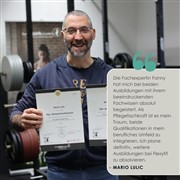
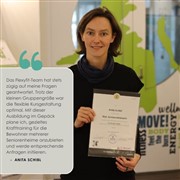
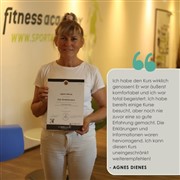
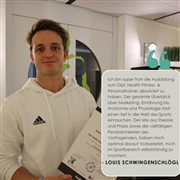

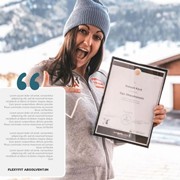

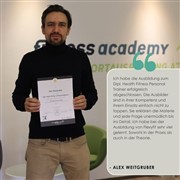
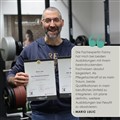


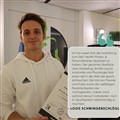


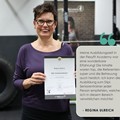
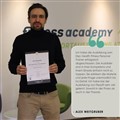

€ 1.990,- | Classroom Courses
» Our Course Packages
Important informations
Recognized & Certified
Our graduates, partners & friends say
Our team will be happy to advise you at any time by phone, chat or in person
Running is a great form of physical activity that has a positive impact on both health and mental well-being. Many people choose to run because it can be done anywhere and doesn't require expensive equipment. All you need is a pair of running shoes and you're ready to go!
Training to become a running coach is the perfect way to share your passion for running with others and expand your knowledge at the same time.
In this course, you will learn all about different running styles and techniques, the right training plan, different intensity ranges and much more. You will learn how running enthusiasts are prepared for a marathon or other running competition and can then pass on this knowledge. You will be able to choose the right training methods to improve your performance and achieve optimum results on race day.
If you are enthusiastic about triathlon and would like to expand your knowledge in the areas of swimming and triathlon, then the certified triathlon coach course is the right choice for you. In addition to the running coach module, this course also includes both the swimming coach and triathlon coach courses and their extensive practical and theoretical content.
Extent of learning
553 E
EQF level
The training is based on EQF level 4 »
Course start
Possible immediately
Learning variant
Classroom Courses

| 03-01-2026 | € 1.990,-
| 03-01-2026 | € 1.990,-
| 03-01-2026 | € 1.990,-
| 03-01-2026 | € 1.990,-

Our running coach training course provides you with everything you need to start your career in the sports and health sector. Regardless of whether you want to work in a gym or as an independent running coach, or whether you simply want to optimize your own training: With the Trainer A license, you are laying the first foundation stone in the right direction!
Start flexibly at a time of your choice with the online module Sports Competence and learn completely independent of time and place. We support you with prepared scripts and numerous FullHD learning videos that are available to you anywhere and at any time. The documents will stay with you for the rest of your life, even after you have completed your training! You can also benefit from the comprehensive specialist knowledge of our academic instructors on the subject of running in the >presentation course units.
In the basic module, we will first deal with anatomical, physiological and training science basics. In our >practice-oriented lessons, you will also learn about various training methods, how to design training plans and carry out performance diagnostics. From >techniqueand motivation to specific strength training, all aspects of training will be covered so that you are optimally prepared for your professional running career when you complete your running coach training.
Our certificates are valid worldwide and are issued in different versions. On request, you can receive our certificate in several languages (DE, EN, ES), with country-specific information and with or without printed grades.
All these variants are available to you free of charge for a lifetime for downloading from your online campus. In addition, depending on the learning package you have purchased, you will receive a certificate of your choice, which will be issued on high-quality special paper with embossed printing.
The following certificate will be awarded (in several languages DE, EN, ES):
We are happy to help you by phone, e-mail or chat. However, you may find the answer to your question in our general FAQ or running coach FAQ.
Extent of learning
200
Sports expertise
314
Presence | Self-study
6
Literature research
30
Practical realization
3
Additional tasks & examinations
Our training courses are generally eligible for funding. The relevant funding body will decide whether you are eligible for funding.
We will be happy to support you in compiling all the necessary course information you need for your funding application.
Of course, we will be on hand to advise you throughout the entire process and support you from the initial inquiry to the submission of your application. Contact us - we will make sure that you are as well prepared as possible!
Show all chapters of the subjects

We educate the best trainers in the fitness branch. From start to finish of the education - and beyond!- we support and guide our students.
Functional anatomy is a foundation necessary for all trainers in exercise, fitness and sports. This subject provides a comprehensive introduction to the anatomy of the human body and a wellspring of important knowledge.
The course is constructed to present the information in an interesting and comprehensible manner and features different learning approaches appropriate for Fitness and Personal Trainers.
The goal is, to understand the relationship between movement patterns, the human body and relevant anatomical terminology.

Our participants are introduced to the basics of sports nutrition.
As a foundation the composition of general nutrition including macro and micro nutrients, as well as the water balance, are discussed. In order to understand various correlations, the energy metabolism are explained in detail.
In addition, the effects of individual food components in the human body, as well as their importance in sports are covered.


More and more companies are integrating Corporate Wellness and similar health initiatives into their employee benefits packages. By doing so they promote the health and well-being of their employees, reducing the incidence of sick-leave and building healthier, stronger team dynamics.
Exactly why such initiatives are important is discussed in this introduction to the concept, as well as challenges that such initiatives face including organisational dysfunction.
Participants also learn about the advantages of corporate wellness and some trusted approaches and tools for finding and working with a company.
We offer suggestions on how to approach companies about Corporate Wellness, how to develop a corporate wellness concept and important organisational points to consider.
Participants will be exposed to some practical examples and will have the possiblity to perform group work on the topic.

The unit on Marketing and Customer Interaction gives participants some insight into identifying, working with and marketing to their ideal customer. This is one of the most useful units for the aspiring trainer, as it helps them identify their place in the market, which makes for a more successful career start.
We begin by taking a look at Marketing itself to understand exactly what it is and of what relevance it has for personal trainers.
Important basic concepts such as USP, positioning, target market, etc. are introduced and different models from marketing such as the SMART Formula, marketing mix (7Ps) and more are explained.
The communication between trainer and client is also addressed in this unit. Various aspects of communication theory and some guidelines for successful communication are covered.
Upon completion of this subject, participants are able to develop marketing strategies for their product and/or services, ready to position themselves in a market rich in variety and full of possibility!

A working understanding of human physiology and therefore the relationships between the various functions of the human body is crucial for anyone working in the exercise and fitness field. It is a requisite knowledge for the sufficient practice of their profession.
This course makes the relationships within the human organism graspable for everyone. Take a deep-dive into the human body and learn the functions of our organism for your new profession in fitness.
In this subject you will get a close look at energy metabolism needed for muscle activation, the circulatory system and the pulmonary system.
Any high quality education in fitness and exercise begins with the foundations of anatomy and physiology.

In this unit participants are prepared for successful communication with their clients on every level. In addition, we take a look at how the trainer or coach can go about dealing with their own goals and motives, which will in turn help them better understand their clients.
The right goal-setting and the proper approach to feedback are an important parts of this unit.
The way we manage stress as trainers and with our clients and a variety of learning strategies are explored so these skills can be integrated into your professional approach.

The first part of training theory teaches the basics of training, such as training principles, principles of training design, training methods and the factors of athletic performance.
As performance, performance diagnostics, training and competition are closely interrelated, they are also taught accordingly in the course.
In the second part of training theory, training is defined and evaluated as a complex action process and in connection with planning, execution and evaluation.
An important part of training theory is still the design of training plans, which is taught in practice with examples of the possibilities of designing a training plan.
In order to delve even deeper into training science, we have worked with top international speakers such as Prof. em. Dr. phil. Dr. med. Dr. h.c. Jürgen Weineck, we have also developed a video workshop on the subject of altitude training.
Show all chapters of the subjects

The fundamentals of running cover key topics around running training and the role of the running coach. It emphasizes the versatility and importance of running as a sport, as it is an accessible, flexible sport that offers both physical and mental benefits, such as strengthening the cardiovascular system, improving endurance and reducing stress. Emphasis is placed on the physiological basis of running, in particular energy metabolism (aerobic and anaerobic), the function of the cardiovascular system and muscles, and the important role of regeneration in preventing overuse injuries and adapting the body to increasing loads.
Different types of runners, such as recreational runners, ambitious runners and group runners, who each pursue different goals and motivations, are introduced. It is emphasized how important it is for a coach to understand and respond to these individual needs. Motivation and goal setting play a central role, whether through personal, competitive or social drives. Key concepts in running training, such as optimizing the running style, long-term training planning and measures for regeneration and injury prevention are also central topics. This content provides a comprehensive basis for the professional and individual coaching of runners.


Coaching running groups deals with the effective coaching and motivation of running groups. It highlights the benefits of running groups, including mutual motivation, social networking, health benefits and the opportunity to prepare for competitions by training together. Running groups also offer mental support, variety and help to boost self-confidence.
Another key point is the challenges that can arise in running groups, such as different performance levels, motivation problems and conflicts within the group. Strategies for overcoming these challenges are presented, for example by dividing into groups based on performance, clear communication, varied training sessions and encouraging group dynamics.
The principles of training design such as flexibility, integration and individualization are presented and show how they can be implemented in practice. Examples such as interval training, pyramid runs and technique exercises provide instructions for a varied training program that involves beginners and advanced runners alike. Finally, various methods are presented to make training varied and motivating, including pace groups, relay races and driving games to promote group dynamics and take different needs into account.

Running technique is, alongside the metabolic (internal) parameters, one of the most important determinants of endurance performance.
The term "movement economy" refers, in simple terms, to the degree of energetic efficiency of running movements. Or in other words, how much energy is consumed with each stride? From observations and studies in recent years, we can conclude that a large number of runners who work on improving their running technique or movement optimization can achieve significant performance improvements.
Improving running technique is particularly relevant for runners who run at a high level and have ambitious goals. When the stride is too long and the foot lands far in front of the body's center of gravity, energy is wasted. The momentum of the running movement is slowed down with each step, and high forces act on the muscles, tendons, joints, and bones, increasing the risk of injury. The risk is especially high for runners who land on their heels, as there is a danger of landing too far in front. It is lower for those who land on the midfoot, automatically placing the foot closer below the body's center of gravity.
Running with an upright posture:
At the end of the flight phase, just before the foot touches the ground, the brain sends a signal to the muscles to prepare for impact. The muscles contract to stabilize the joints. However, if this communication is faulty or too slow, the information does not reach the muscles in time. If the upper body is not properly aligned, ideal landing is not possible. If you have a hollow back, the upper body shifts backward and you land with your foot too far in front. If the upper body is leaning too far forward, clean landing is also not possible.
This section of the Running Coach Training covers the following topics:


The design of long-term performance development (training planning) is one of the central activities of the running coach. Depending on the individual goal of the respective athlete, a variety of factors must be taken into account in order to optimize the planning from a physiological and psychological point of view. The challenges involved in designing an effective training plan vary enormously depending on performance level, (other) professional activity, (genetic) foundations, individual motivation, time constraints and external circumstances.
Anyone who has ever drawn up a training plan for a competition or other sporting goal knows how complex the subject is. Many runners are not aware of how important the right training plan is for success in a competition. It doesn't matter whether you want to run a half marathon, a marathon or even an ultramarathon. Even at these extreme distances, crucial seconds, even minutes, can be shaved off with the right training plan.
Many different factors need to be taken into account in order to optimize planning from both a physiological and psychological perspective.
In this subject, our budding running coaches will take a closer look at training planning, focusing in particular on the following points:
- What factors need to be considered when planning training?
- How can the performance build-up be optimized?
- How can the athlete's motivation be increased?
You need to focus not only on the running route and running style of your future clients, but also on other factors. The points that need to be considered when designing an optimal training plan are the athlete's goals, their current level of performance, the available training equipment and infrastructure, as well as the time and local conditions. When setting goals, it is important to set realistic and achievable targets that motivate the athlete and help them to develop further.
Every runner is different. Not only in terms of their starting level, but also their goals and training. In order to meet the respective requirements, it is important that the running coach knows the needs of his athlete. This is the only way to create a training plan that really increases motivation and leads to the desired goals.


Preparing for a competition involves targeted measures to optimize performance and minimize stress. The tapering phase plays a decisive role by reducing the training volume before the competition in order to promote regeneration and supercompensation. Performance is increased through adapted intensities and specific training plans. At the same time, this phase enables mental preparation through visualization and relaxation exercises.
Nutrition and hydration are key components of the competition week. Targeted carbo-loading replenishes glycogen stores, while a balanced fluid intake prevents dehydration. On race day, easily digestible, carbohydrate-rich meals are crucial, supplemented by tried and tested gels or drinks during the race.
Structured planning minimizes stress. A packing list ensures that all important items, from shoes to snacks, are prepared. Mental techniques such as visualization boost self-confidence by allowing you to mentally play through the course of the race and possible challenges. Pacemaking helps to optimally control the pace, efficiently allocate energy and reduce mental stress.
After the competition, the focus is on regeneration and reflection. Relaxed movements, targeted nutrition and sufficient sleep promote physical recovery. A feedback session and celebrating successes serve to build motivation for future competitions and analyze progress.
Available course variations
Language of Instruction
Course Module
Fitness Fundamentals
Fitness basics (presence)
Fitness Fundamentals Full HD Video Lessons
Running Coach Module Full HD Video Lessons
Course Modality
Study Method
Auditory & Visual Learning Style
Communicative & Kinesthetic Learning Style
Study Timeframe
Text & Presentation PDFs
Lectures Bookable as Classroom Units
Support via Online Campus, E-mail, Chat, Tel.
WhatsApp & On-site Support
Test/Dummy Exam
NADA Austria
Altitude Training - Prof. Dr. Weineck
Fitness Fundamentals Theory Exams Online
Final Exam
Certificate in DE, EN or ES
Certificate accepted worldwide & never expires
Lifetime Access to Online Campus
Free Demo Account / Trial Package
Certificate Copy as Downloadable PDF
Certificate with Verification via QR-Code
Financial Aid/Grant Opportunities
Paid Educational Leave (AT)
Grants for Businesses
Grants for Self-Employed Persons
Course Advising
Cost Estimate for Financial Aid Provider
Job Openings Mailing List
Comprehensive Training Opportunities
Absolute Best Price & Service Offer
EN
Online + expert discussion
online
Optionally bookable
314
68
Online
visual
recommended
suitable
flexible
bookable
Flexible date
up to 100%
non-binding
EN
Group attendance course
online
Optionally bookable
314
postable
online/presence
visual/motor
well suited
well suited
flexible + dates
postable
Flexible date
up to 100%
non-binding
DE, EN
Individual lessons
online
contain
314
67
One2One
visual/motor
suitable
recommended
individual
contain
individual
up to 100%
non-binding
There are a variety of funding options for training at the Flexyfit Sports Academy. State-specific and EU funding as well as tax-related options form the basis for this.
However, we would like to point out that the respective funding body is solely responsible for deciding on the allocation or amount of funding.
We will be happy to help you find a suitable funding body and compile all the course information you need for a funding application. You must submit the application itself to the funding bodies.
Depending on the funding institution, the training costs are either paid directly after the funding application has been confirmed (e.g. AMS) or reimbursed in full or in part after successful completion of the training (e.g. waff). Please contact the funding institutions yourself to find out how the funding works.
Yes, the majority of our courses are suitable for educational leave.
If you want to continue your education without terminating your employment, you can arrange educational leave with your employer. This means that you will be released from work for the duration of your training.
Plan your educational leave with us now! We will be happy to clarify your individual training requirements with you in a personal, non-binding consultation.
You can take your educational leave for a maximum of 1 year within 4 years - there are 3 options:
It is important that your employer agrees to you taking educational leave. You must provide evidence of the training plans issued by us to the extent of 20 hours per week in the case of full-time educational leave, or at least 10 hours in the case of part-time educational leave.
You must regularly provide evidence of the progress of your training. For example, in the form of examinations or confirmation of attendance, which you will receive from us.
Running trainers (also known as running coaches) provide professional support to runners to help them improve their performance and prepare for competitions.
Starting with performance diagnostics, the trainer determines the level of training and creates a customized training plan for the customer with appropriate training methods. The trainer also advises his customers in areas such as motivation and nutrition.
We regularly list job advertisements from fitness studios on our Sportkarriere platform. There you can apply directly for jobs as a fitness trainer, branch manager, instructor or studio employee.

Our running coach training course provides you with everything you need to start your career in the sports and health sector. Regardless of whether you want to work in a gym or as an independent running coach, or whether you simply want to optimize your own training: With the Trainer A license, you are laying the first foundation stone in the right direction!
Start flexibly at a time of your choice with the online module Sports Competence and learn completely independent of time and place. We support you with prepared scripts and numerous FullHD learning videos that are available to you anywhere and at any time. The documents will stay with you for the rest of your life, even after you have completed your training! You can also benefit from the comprehensive specialist knowledge of our academic instructors on the subject of running in the >presentation course units.
In the basic module, we will first deal with anatomical, physiological and training science basics. In our >practice-oriented lessons, you will also learn about various training methods, how to design training plans and carry out performance diagnostics. From >techniqueand motivation to specific strength training, all aspects of training will be covered so that you are optimally prepared for your professional running career when you complete your running coach training.
Our certificates are valid worldwide and are issued in different versions. On request, you can receive our certificate in several languages (DE, EN, ES), with country-specific information and with or without printed grades.
All these variants are available to you free of charge for a lifetime for downloading from your online campus. In addition, depending on the learning package you have purchased, you will receive a certificate of your choice, which will be issued on high-quality special paper with embossed printing.
The following certificate will be awarded (in several languages DE, EN, ES):
We are happy to help you by phone, e-mail or chat. However, you may find the answer to your question in our general FAQ or running coach FAQ.
Extent of learning
200
Sports expertise
314
Presence | Self-study
6
Literature research
30
Practical realization
3
Additional tasks & examinations
Our training courses are generally eligible for funding. The relevant funding body will decide whether you are eligible for funding.
We will be happy to support you in compiling all the necessary course information you need for your funding application.
Of course, we will be on hand to advise you throughout the entire process and support you from the initial inquiry to the submission of your application. Contact us - we will make sure that you are as well prepared as possible!
Show all chapters of the subjects

We educate the best trainers in the fitness branch. From start to finish of the education - and beyond!- we support and guide our students.
Functional anatomy is a foundation necessary for all trainers in exercise, fitness and sports. This subject provides a comprehensive introduction to the anatomy of the human body and a wellspring of important knowledge.
The course is constructed to present the information in an interesting and comprehensible manner and features different learning approaches appropriate for Fitness and Personal Trainers.
The goal is, to understand the relationship between movement patterns, the human body and relevant anatomical terminology.

Our participants are introduced to the basics of sports nutrition.
As a foundation the composition of general nutrition including macro and micro nutrients, as well as the water balance, are discussed. In order to understand various correlations, the energy metabolism are explained in detail.
In addition, the effects of individual food components in the human body, as well as their importance in sports are covered.


More and more companies are integrating Corporate Wellness and similar health initiatives into their employee benefits packages. By doing so they promote the health and well-being of their employees, reducing the incidence of sick-leave and building healthier, stronger team dynamics.
Exactly why such initiatives are important is discussed in this introduction to the concept, as well as challenges that such initiatives face including organisational dysfunction.
Participants also learn about the advantages of corporate wellness and some trusted approaches and tools for finding and working with a company.
We offer suggestions on how to approach companies about Corporate Wellness, how to develop a corporate wellness concept and important organisational points to consider.
Participants will be exposed to some practical examples and will have the possiblity to perform group work on the topic.

The unit on Marketing and Customer Interaction gives participants some insight into identifying, working with and marketing to their ideal customer. This is one of the most useful units for the aspiring trainer, as it helps them identify their place in the market, which makes for a more successful career start.
We begin by taking a look at Marketing itself to understand exactly what it is and of what relevance it has for personal trainers.
Important basic concepts such as USP, positioning, target market, etc. are introduced and different models from marketing such as the SMART Formula, marketing mix (7Ps) and more are explained.
The communication between trainer and client is also addressed in this unit. Various aspects of communication theory and some guidelines for successful communication are covered.
Upon completion of this subject, participants are able to develop marketing strategies for their product and/or services, ready to position themselves in a market rich in variety and full of possibility!

A working understanding of human physiology and therefore the relationships between the various functions of the human body is crucial for anyone working in the exercise and fitness field. It is a requisite knowledge for the sufficient practice of their profession.
This course makes the relationships within the human organism graspable for everyone. Take a deep-dive into the human body and learn the functions of our organism for your new profession in fitness.
In this subject you will get a close look at energy metabolism needed for muscle activation, the circulatory system and the pulmonary system.
Any high quality education in fitness and exercise begins with the foundations of anatomy and physiology.

In this unit participants are prepared for successful communication with their clients on every level. In addition, we take a look at how the trainer or coach can go about dealing with their own goals and motives, which will in turn help them better understand their clients.
The right goal-setting and the proper approach to feedback are an important parts of this unit.
The way we manage stress as trainers and with our clients and a variety of learning strategies are explored so these skills can be integrated into your professional approach.

The first part of training theory teaches the basics of training, such as training principles, principles of training design, training methods and the factors of athletic performance.
As performance, performance diagnostics, training and competition are closely interrelated, they are also taught accordingly in the course.
In the second part of training theory, training is defined and evaluated as a complex action process and in connection with planning, execution and evaluation.
An important part of training theory is still the design of training plans, which is taught in practice with examples of the possibilities of designing a training plan.
In order to delve even deeper into training science, we have worked with top international speakers such as Prof. em. Dr. phil. Dr. med. Dr. h.c. Jürgen Weineck, we have also developed a video workshop on the subject of altitude training.
Show all chapters of the subjects

The fundamentals of running cover key topics around running training and the role of the running coach. It emphasizes the versatility and importance of running as a sport, as it is an accessible, flexible sport that offers both physical and mental benefits, such as strengthening the cardiovascular system, improving endurance and reducing stress. Emphasis is placed on the physiological basis of running, in particular energy metabolism (aerobic and anaerobic), the function of the cardiovascular system and muscles, and the important role of regeneration in preventing overuse injuries and adapting the body to increasing loads.
Different types of runners, such as recreational runners, ambitious runners and group runners, who each pursue different goals and motivations, are introduced. It is emphasized how important it is for a coach to understand and respond to these individual needs. Motivation and goal setting play a central role, whether through personal, competitive or social drives. Key concepts in running training, such as optimizing the running style, long-term training planning and measures for regeneration and injury prevention are also central topics. This content provides a comprehensive basis for the professional and individual coaching of runners.


Coaching running groups deals with the effective coaching and motivation of running groups. It highlights the benefits of running groups, including mutual motivation, social networking, health benefits and the opportunity to prepare for competitions by training together. Running groups also offer mental support, variety and help to boost self-confidence.
Another key point is the challenges that can arise in running groups, such as different performance levels, motivation problems and conflicts within the group. Strategies for overcoming these challenges are presented, for example by dividing into groups based on performance, clear communication, varied training sessions and encouraging group dynamics.
The principles of training design such as flexibility, integration and individualization are presented and show how they can be implemented in practice. Examples such as interval training, pyramid runs and technique exercises provide instructions for a varied training program that involves beginners and advanced runners alike. Finally, various methods are presented to make training varied and motivating, including pace groups, relay races and driving games to promote group dynamics and take different needs into account.

Running technique is, alongside the metabolic (internal) parameters, one of the most important determinants of endurance performance.
The term "movement economy" refers, in simple terms, to the degree of energetic efficiency of running movements. Or in other words, how much energy is consumed with each stride? From observations and studies in recent years, we can conclude that a large number of runners who work on improving their running technique or movement optimization can achieve significant performance improvements.
Improving running technique is particularly relevant for runners who run at a high level and have ambitious goals. When the stride is too long and the foot lands far in front of the body's center of gravity, energy is wasted. The momentum of the running movement is slowed down with each step, and high forces act on the muscles, tendons, joints, and bones, increasing the risk of injury. The risk is especially high for runners who land on their heels, as there is a danger of landing too far in front. It is lower for those who land on the midfoot, automatically placing the foot closer below the body's center of gravity.
Running with an upright posture:
At the end of the flight phase, just before the foot touches the ground, the brain sends a signal to the muscles to prepare for impact. The muscles contract to stabilize the joints. However, if this communication is faulty or too slow, the information does not reach the muscles in time. If the upper body is not properly aligned, ideal landing is not possible. If you have a hollow back, the upper body shifts backward and you land with your foot too far in front. If the upper body is leaning too far forward, clean landing is also not possible.
This section of the Running Coach Training covers the following topics:


The design of long-term performance development (training planning) is one of the central activities of the running coach. Depending on the individual goal of the respective athlete, a variety of factors must be taken into account in order to optimize the planning from a physiological and psychological point of view. The challenges involved in designing an effective training plan vary enormously depending on performance level, (other) professional activity, (genetic) foundations, individual motivation, time constraints and external circumstances.
Anyone who has ever drawn up a training plan for a competition or other sporting goal knows how complex the subject is. Many runners are not aware of how important the right training plan is for success in a competition. It doesn't matter whether you want to run a half marathon, a marathon or even an ultramarathon. Even at these extreme distances, crucial seconds, even minutes, can be shaved off with the right training plan.
Many different factors need to be taken into account in order to optimize planning from both a physiological and psychological perspective.
In this subject, our budding running coaches will take a closer look at training planning, focusing in particular on the following points:
- What factors need to be considered when planning training?
- How can the performance build-up be optimized?
- How can the athlete's motivation be increased?
You need to focus not only on the running route and running style of your future clients, but also on other factors. The points that need to be considered when designing an optimal training plan are the athlete's goals, their current level of performance, the available training equipment and infrastructure, as well as the time and local conditions. When setting goals, it is important to set realistic and achievable targets that motivate the athlete and help them to develop further.
Every runner is different. Not only in terms of their starting level, but also their goals and training. In order to meet the respective requirements, it is important that the running coach knows the needs of his athlete. This is the only way to create a training plan that really increases motivation and leads to the desired goals.


Preparing for a competition involves targeted measures to optimize performance and minimize stress. The tapering phase plays a decisive role by reducing the training volume before the competition in order to promote regeneration and supercompensation. Performance is increased through adapted intensities and specific training plans. At the same time, this phase enables mental preparation through visualization and relaxation exercises.
Nutrition and hydration are key components of the competition week. Targeted carbo-loading replenishes glycogen stores, while a balanced fluid intake prevents dehydration. On race day, easily digestible, carbohydrate-rich meals are crucial, supplemented by tried and tested gels or drinks during the race.
Structured planning minimizes stress. A packing list ensures that all important items, from shoes to snacks, are prepared. Mental techniques such as visualization boost self-confidence by allowing you to mentally play through the course of the race and possible challenges. Pacemaking helps to optimally control the pace, efficiently allocate energy and reduce mental stress.
After the competition, the focus is on regeneration and reflection. Relaxed movements, targeted nutrition and sufficient sleep promote physical recovery. A feedback session and celebrating successes serve to build motivation for future competitions and analyze progress.
Available course variations
Language of Instruction
Course Module
Fitness Fundamentals
Fitness basics (presence)
Fitness Fundamentals Full HD Video Lessons
Running Coach Module Full HD Video Lessons
Course Modality
Study Method
Auditory & Visual Learning Style
Communicative & Kinesthetic Learning Style
Study Timeframe
Text & Presentation PDFs
Lectures Bookable as Classroom Units
Support via Online Campus, E-mail, Chat, Tel.
WhatsApp & On-site Support
Test/Dummy Exam
NADA Austria
Altitude Training - Prof. Dr. Weineck
Fitness Fundamentals Theory Exams Online
Final Exam
Certificate in DE, EN or ES
Certificate accepted worldwide & never expires
Lifetime Access to Online Campus
Free Demo Account / Trial Package
Certificate Copy as Downloadable PDF
Certificate with Verification via QR-Code
Financial Aid/Grant Opportunities
Paid Educational Leave (AT)
Grants for Businesses
Grants for Self-Employed Persons
Course Advising
Cost Estimate for Financial Aid Provider
Job Openings Mailing List
Comprehensive Training Opportunities
Absolute Best Price & Service Offer
EN
Online + expert discussion
online
Optionally bookable
314
68
Online
visual
recommended
suitable
flexible
bookable
Flexible date
up to 100%
non-binding
EN
Group attendance course
online
Optionally bookable
314
postable
online/presence
visual/motor
well suited
well suited
flexible + dates
postable
Flexible date
up to 100%
non-binding
DE, EN
Individual lessons
online
contain
314
67
One2One
visual/motor
suitable
recommended
individual
contain
individual
up to 100%
non-binding
There are a variety of funding options for training at the Flexyfit Sports Academy. State-specific and EU funding as well as tax-related options form the basis for this.
However, we would like to point out that the respective funding body is solely responsible for deciding on the allocation or amount of funding.
We will be happy to help you find a suitable funding body and compile all the course information you need for a funding application. You must submit the application itself to the funding bodies.
Depending on the funding institution, the training costs are either paid directly after the funding application has been confirmed (e.g. AMS) or reimbursed in full or in part after successful completion of the training (e.g. waff). Please contact the funding institutions yourself to find out how the funding works.
Yes, the majority of our courses are suitable for educational leave.
If you want to continue your education without terminating your employment, you can arrange educational leave with your employer. This means that you will be released from work for the duration of your training.
Plan your educational leave with us now! We will be happy to clarify your individual training requirements with you in a personal, non-binding consultation.
You can take your educational leave for a maximum of 1 year within 4 years - there are 3 options:
It is important that your employer agrees to you taking educational leave. You must provide evidence of the training plans issued by us to the extent of 20 hours per week in the case of full-time educational leave, or at least 10 hours in the case of part-time educational leave.
You must regularly provide evidence of the progress of your training. For example, in the form of examinations or confirmation of attendance, which you will receive from us.
Running trainers (also known as running coaches) provide professional support to runners to help them improve their performance and prepare for competitions.
Starting with performance diagnostics, the trainer determines the level of training and creates a customized training plan for the customer with appropriate training methods. The trainer also advises his customers in areas such as motivation and nutrition.
We regularly list job advertisements from fitness studios on our Sportkarriere platform. There you can apply directly for jobs as a fitness trainer, branch manager, instructor or studio employee.

2 weeks ago
Very well organized team, uncomplicated operation of online lessons, versatile informative script :) All in all top!
posted on
2 weeks ago
I am very impressed with Flexyfit, always nice and helpful people. Very sympathetic. Thank you very much for your great support.
posted on
3 weeks ago
Great training and super nice people. You can tell how much emphasis is placed on conveying the necessary knowledge to the course participants in an understandable way. I was even kindly allowed to take a course completely free of charge after there were somewhat problematic and disruptive participants in my group. I will 100% take more courses with you in the future because learning is extremely fun, especially thanks to the friendly staff!
posted on
3 weeks ago
The entire flexyfit team is extremely friendly, prompt and helpful. The lecturers are competent and respond to the course participants. All learning materials were provided clearly and in sufficient detail. The additional videos mean there is something for every type of learner. All in all, the training and exam went well. I can definitely recommend flexyfit and will be happy to book and recommend further training courses with you again!
posted on
a months ago
A great team - competent, friendly, always helpful and supportive - provided excellent support for the practical training. We recommend! :)
posted on
a months ago
Great support and extensive course content. We recommend!
posted on
a months ago
I really enjoyed training to become a B-license fitness trainer there. The teaching materials provided are great and flawless. I learned a lot of new things there and always enjoyed what I was doing. The team is great and is always there for you if you have any questions!
posted on
a month ago
The best thing that could have happened to me is this academy. Access to participants is excellent. All employees are very competent, very professional and very friendly. A person can learn so much that it is indescribably good. I would recommend it to everyone. When I arrived in Austria I was looking for something like this and luckily I found this academy and signed up for the course without hesitation. Everything we get in return is worth 100 times more than what we pay. Indescribable experience, indescribable people, once again and 1000 times I say: Thank you for everything, thank you for this indescribable experience. THANK YOU, THANK YOU, THANK YOU
posted on
a months ago
I was able to learn a lot of new things as part of my training at the Flexyfit Academy and was able to take on a new, demanding challenge with my chosen course. The structure of the training courses is very understandable and clear, so that you can master the distance learning course on your own without any problems. If there were any questions, ambiguities or isolated problems, the Academy team was always quick to help and we could always find a common solution. Here and there I would have liked a little more practical relevance. Nevertheless, I always felt very comfortable, had great speakers and with my degree as a qualified medical sports coach, many new doors are now open to me :)
posted on
2 months ago
I was able to complete my chosen course very well and quickly. The team is very quick and courteous and you are always offered a good solution if there are any uncertainties. I will book again when I get the chance and can recommend the academy!
posted on
"Flexyfit - flexible learning, fit for the future."

Please select a learning variant or enter a search text!